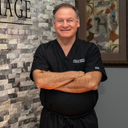Posted underFacelift q&a
Why would a Surgeon choose a SMAS-imbrication over a SMAS-ectomy, where is the logic in keeping excess SMAS in the face?
Also, wouldn't it be counterproductive to dissect and re-suture SMAS to a face that is seeking to Lift a droopy jowl look? Just like the outer most layer excessive human skin is dissected and disposed of, why wouldn't you wanna dissect and disposed of excess SMAS?
Answers (15)
From board-certified doctors and trusted medical professionals
Dr. Ronald J. Edelson, MD

Dr. Ronald J. Edelson, MD
Board Certified Plastic Surgeon
Answer
Dr. Steven H. Wiener, MD

Dr. Steven H. Wiener, MD
Board Certified Plastic Surgeon
Answer
Dr. Edwin F. Williams, III, MD

Dr. Edwin F. Williams, III, MD
Board Certified Facial Plastic Surgeon
Answer
Dr. Evan Ransom, MD, FACS

Dr. Evan Ransom, MD, FACS
Board Certified Facial Plastic Surgeon
Answer
Dr. George Volpe, MD

Dr. George Volpe, MD
Board Certified Plastic Surgeon
Answer
Dr. Ram Kalus, MD, FACS

Dr. Ram Kalus, MD, FACS
Board Certified Plastic Surgeon
Answer
Dr. Roger J. Friedman, MD
Dr. Roger J. Friedman, MD
Board Certified Plastic Surgeon
Answer
Dr. Johnson C. Lee, MD
Dr. Johnson C. Lee, MD
Board Certified Plastic Surgeon
Answer
Dr. Patrick Flaharty, MD FAACS

Dr. Patrick Flaharty, MD FAACS
Oculoplastic Surgeon, Board Certified in Ophthalmology
Answer
More Facelift Questions
See all Facelift Q&AWE SEND PRETTY
EMAILS
What’s trending? Who’s turning heads? Which TikTok myths need busting? We’ve got you. No fluff, no gatekeeping—just real talk. Get our free, unfiltered newsletter.
